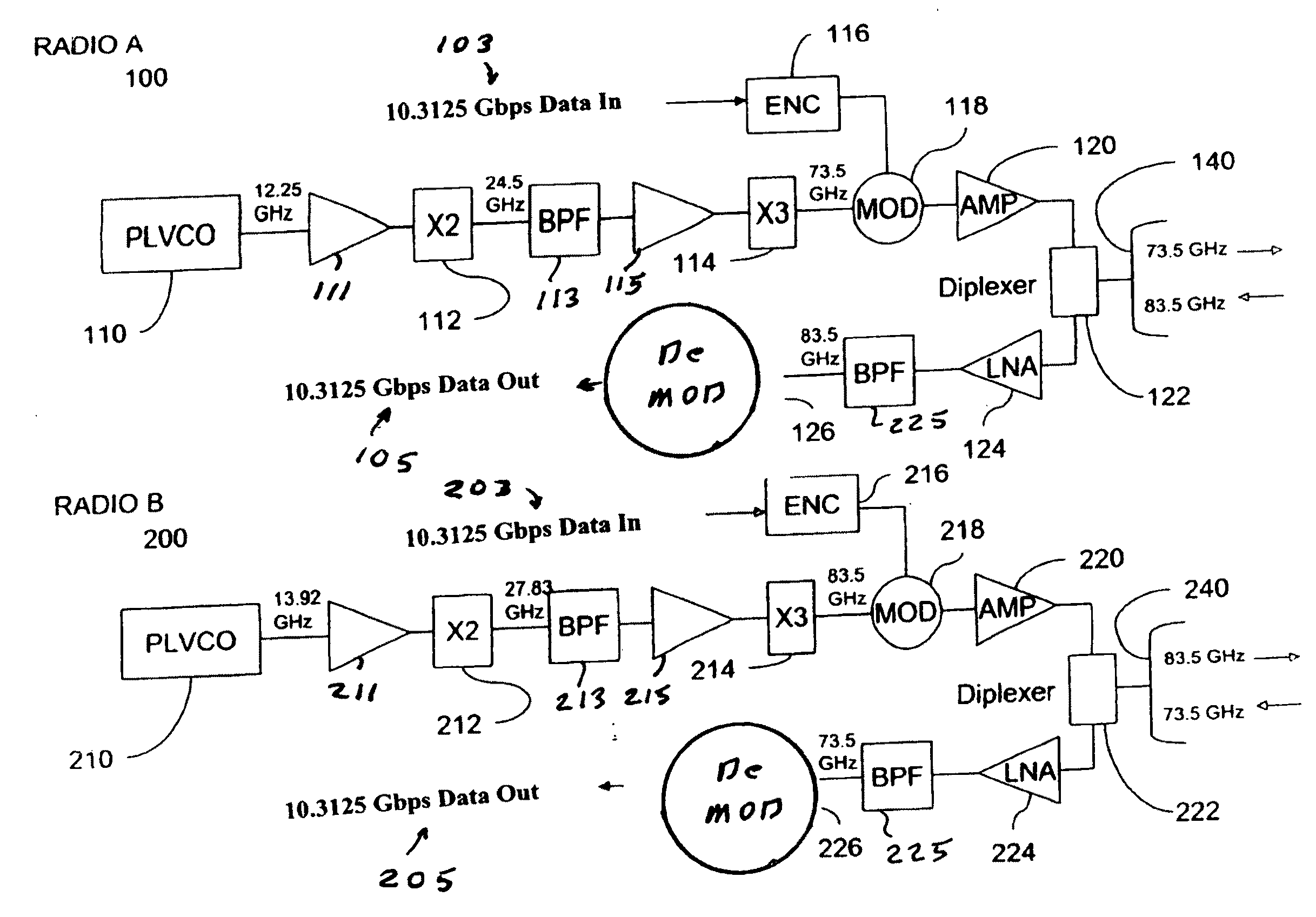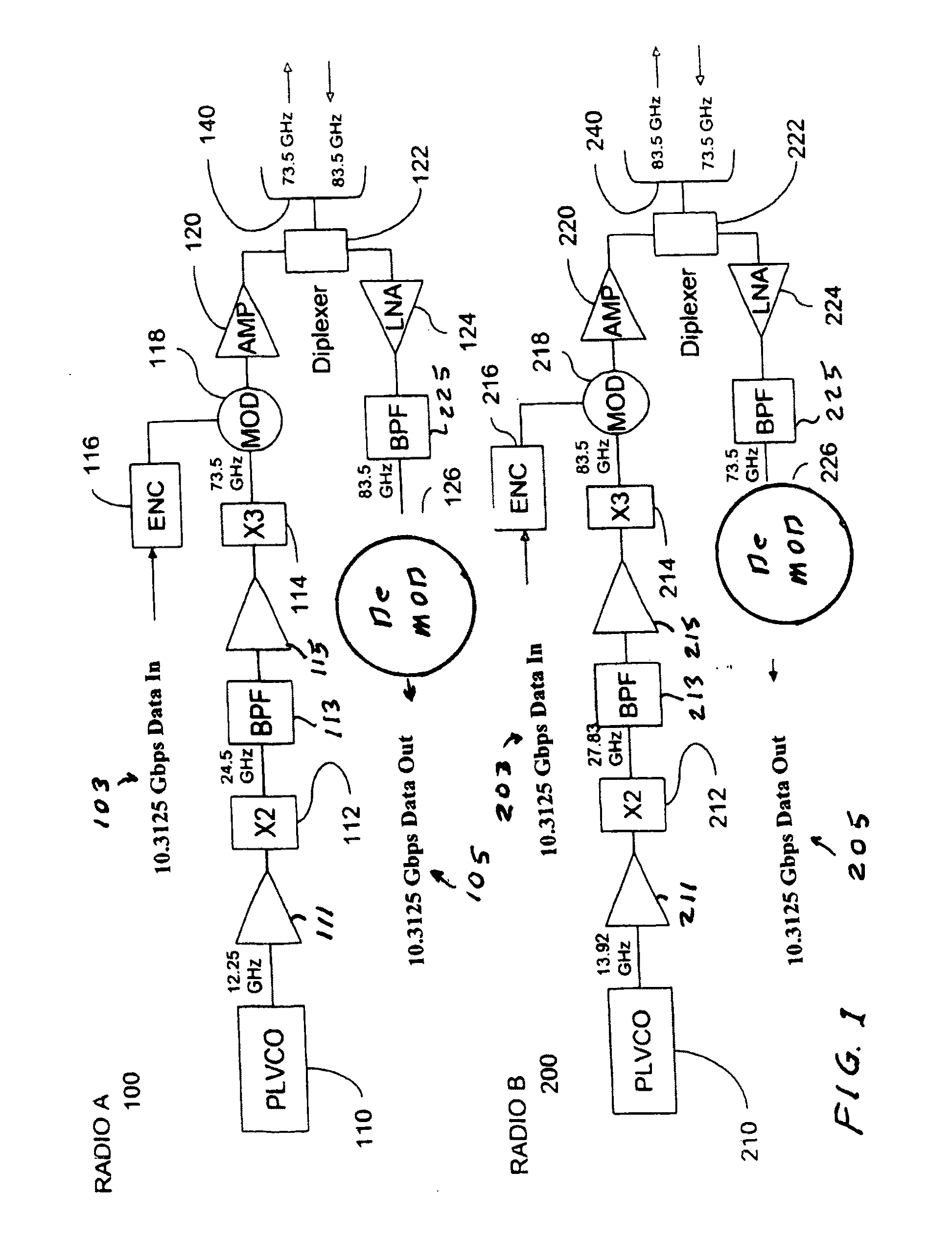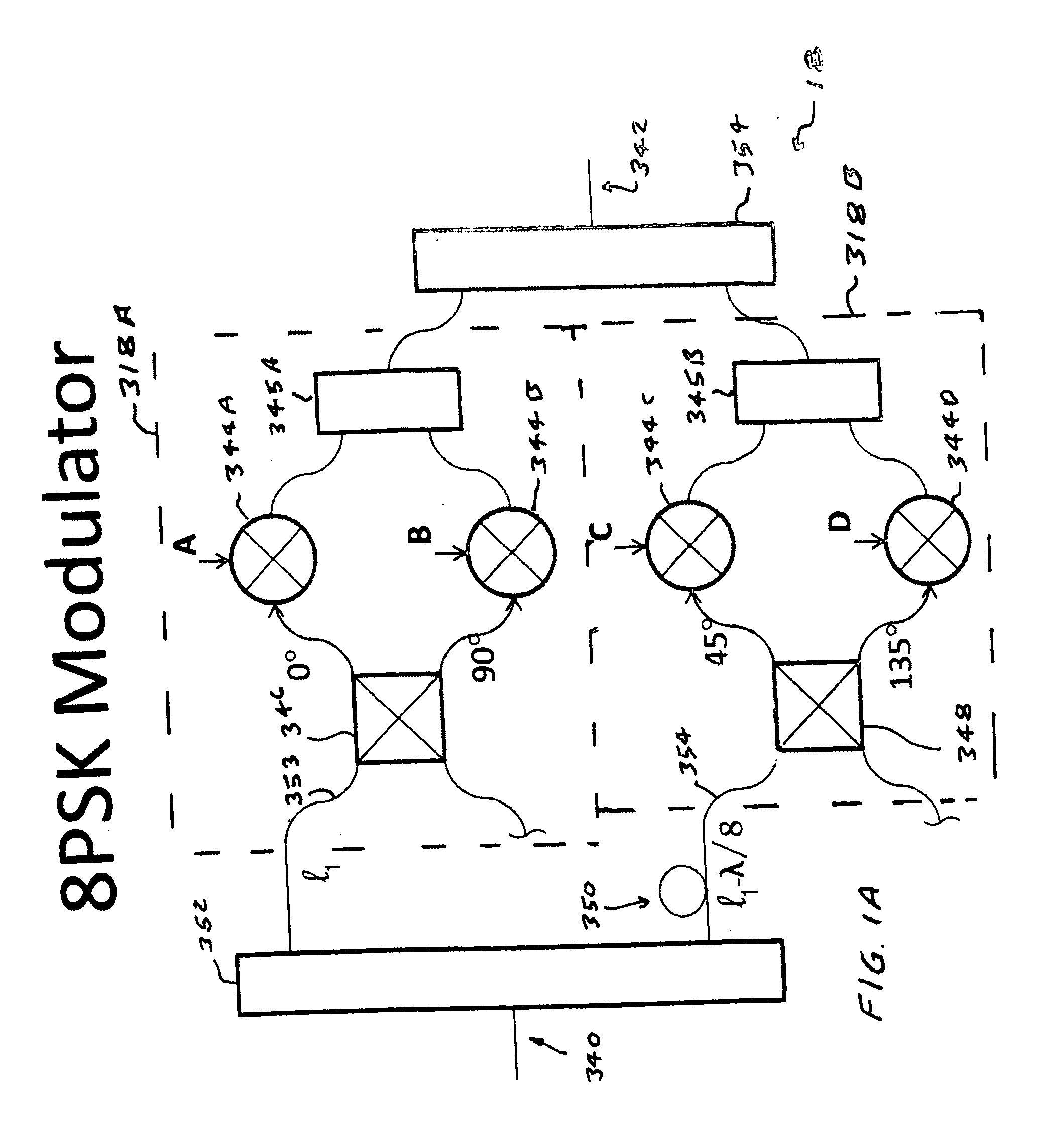High data rate milllimeter wave radio
a millimeter wave radio and high data rate technology, applied in the field of radio systems, can solve the problems of limited available bandwidth in which to transmit as much data, minimal dynamic range variation, and qam techniques that work well on microwave systems
- Summary
- Abstract
- Description
- Claims
- Application Information
AI Technical Summary
Benefits of technology
Problems solved by technology
Method used
Image
Examples
first preferred embodiment
Applicants' 10-GigE Radio
[0025]A first preferred embodiment of the present invention satisfying the needs outlined above is a 10-GigE radio. The radio is based on and is a substantial improvement of the basic circuit design of a 3.072 Gbps radio described in the parent application, of which the present application is a continuation in part. That application is U.S. patent application Ser. No. 12 / 228,114, filed Aug. 7, 2008, Millimeter Wave Radio with Phase Modulation, which is incorporated herein by reference. This parent radio utilized radio circuitry as specifically described in FIG. 3 of the above patent which is reproduced in this application as FIG. 7.
[0026]To support a digital data rate of 10.3125 Gbps (10 Gigabits raw data per second plus IEEE 802.3 Clause 49 64b / 66b encoding which accounts for the excess 0.3125 Gbps), the radio uses 3-bit symbol encoding and has its carrier modulated at a symbol rate of 3.4375 Giga-symbols-per-second so as to fit into the 5 GHz channel modul...
PUM
 Login to View More
Login to View More Abstract
Description
Claims
Application Information
 Login to View More
Login to View More - R&D
- Intellectual Property
- Life Sciences
- Materials
- Tech Scout
- Unparalleled Data Quality
- Higher Quality Content
- 60% Fewer Hallucinations
Browse by: Latest US Patents, China's latest patents, Technical Efficacy Thesaurus, Application Domain, Technology Topic, Popular Technical Reports.
© 2025 PatSnap. All rights reserved.Legal|Privacy policy|Modern Slavery Act Transparency Statement|Sitemap|About US| Contact US: help@patsnap.com



